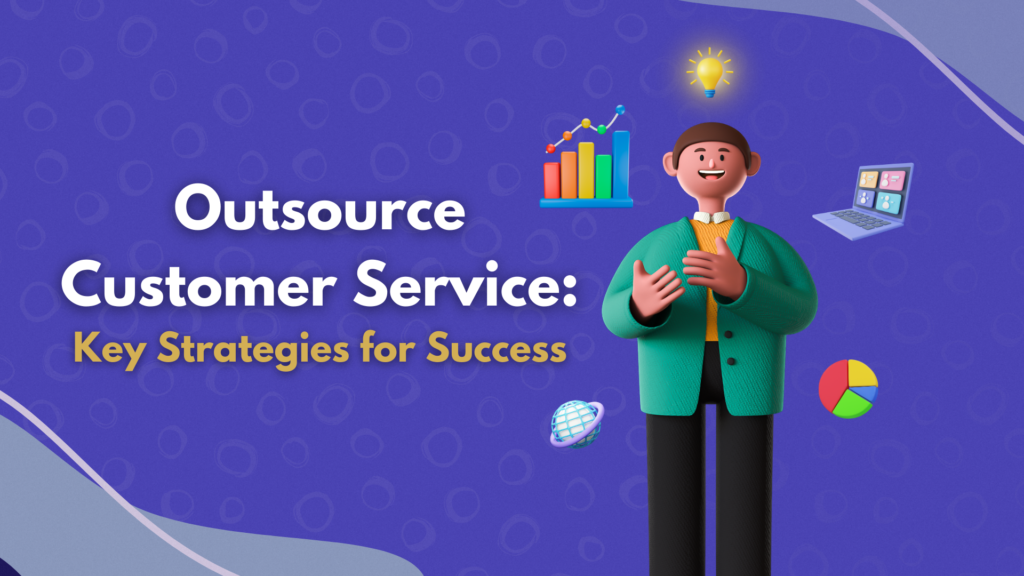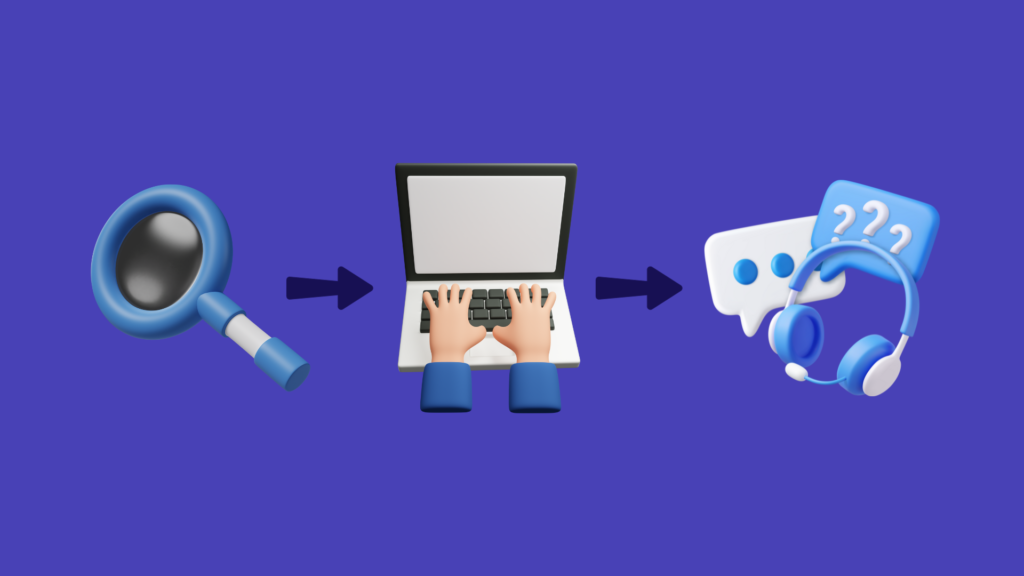Outsource Customer Service: Key Strategies for Success

In an era where time is money and efficiency is the game’s name, businesses are increasingly looking to outsource customer service. This shift isn’t just about cutting costs; it’s a strategic move to stay ahead in a competitive market.
Gone are the days when outsourcing customer service was a last resort. Today, it’s a smart business move. By embracing customer service outsourcing and support outsourcing, companies are redefining their approach to customer relations. This shift is more than just delegating tasks; it’s about enhancing the overall customer experience.
What Does Outsourcing Customer Service Really Mean?
Outsource customer service – a phrase that’s becoming a mantra for savvy business owners. In simple terms, it means handing over your customer service reins to external experts. This strategic move isn’t just about offloading work; it’s about partnering with specialists to elevate your customer service game.
In today’s fast-paced business world, customer service outsourcing isn’t just an option; it’s a necessity for staying competitive. It’s more than just answering calls and emails; it involves a comprehensive approach to customer support, ensuring that every interaction counts. By outsourcing, businesses gain access to a global pool of talent, equipped with the latest in customer support technology and strategies.
A Deeper Dive into Service Outsourcing
The essence of customer service outsourcing extends beyond mere delegation. It’s about integrating external expertise into your business fabric. This integration allows companies to not only manage customer inquiries efficiently but also to analyze customer data for improved service strategies. It’s a journey from outsourcing customer service to transforming it into a cornerstone of business success.
Moreover, customer service outsourcing is tailored to fit the unique needs of your business. Whether it’s handling routine inquiries or providing complex support, outsourcing firms offer a range of services. They bring to the table not just manpower but also insights into customer behavior and expectations.
Cost Comparison: In-House vs. Outsourced

When it comes to deciding whether to outsource customer service, the bottom line often revolves around cost. Is it cheaper to outsource? The answer can be more complex than a simple yes or no. It involves a detailed analysis of not only direct costs but also indirect benefits and savings.
Initially, setting up an in-house customer service team might seem like a straightforward approach. However, it encompasses expenses like recruitment, training, salaries, and technology infrastructure. On the flip side, customer service outsourcing can significantly reduce these overheads. By partnering with specialized firms, businesses tap into a ready-made infrastructure and a team of trained professionals, all without the hefty price tag of developing an in-house team.
Maximizing Efficiency and Savings
But it’s not just about the upfront savings. Customer service outsourcing brings with it a suite of indirect benefits that can be game-changers for businesses. One significant advantage is scalability. Outsourcing firms offer flexibility to scale up or down based on business needs, something that can be cumbersome and expensive with an in-house team.
Furthermore, when you consider the value of customer service outsourcing, think about the efficiency it brings. Outsourced teams are often equipped with the latest tools and technologies in customer support. This means faster response times, more effective problem-solving, and ultimately, happier customers. They bring a wealth of experience in handling diverse customer scenarios, which can significantly enhance the quality of service offered to your customers.
The Process of Outsourcing

Deciding to outsource customer service is a significant step for any business. It’s not just about choosing a vendor; it’s about finding a partner who aligns with your company’s values and goals. The first step is identifying what you need from an outsourced service. Is it handling high call volumes, managing email support, or providing technical assistance?
Once you’ve defined your needs, the next step is to research and shortlist potential outsourcing partners. Look for providers who have a proven track record in your industry and can demonstrate their expertise in customer support and service outsourcing. It’s crucial to evaluate their technology, training programs, and their approach to handling customer interactions. A good fit is a provider who not only understands your business needs but also shares your commitment to customer satisfaction.
Navigating the Selection Process
After narrowing down your options, the next crucial step is discussing and finalizing the terms with your chosen outsourcing partner. This involves negotiating the scope of services, performance metrics, and cost structures. Be clear about your expectations regarding response times, handling of customer queries, and overall management of customer interactions.
Implementing a robust transition plan is key. This includes training the outsourced team about your products or services, your company culture, and the specific nuances of your customer base. Regular communication and feedback loops are essential to ensure that the outsourced customer service team aligns with your company’s standards and objectives.
Finally, remember that outsourcing is a partnership, not just a vendor relationship. Regular reviews and adjustments are necessary to ensure that the partnership evolves with your business needs and continues to add value in customer service outsourcing.
Beyond Cost-Saving: Strategic Benefits

While it’s clear that you can outsource customer service to save costs, the strategic benefits extend far beyond financial savings. Outsourcing transforms customer service from a basic business function into a powerful strategic tool. This shift is pivotal for businesses looking to enhance their market position and customer satisfaction.
One of the key strategic advantages is the ability to focus more on core business activities. By delegating customer support to external experts, business owners, and their teams can concentrate on growth and innovation.
Additionally, outsourcing customer service brings access to a global talent pool. This not only diversifies the skill set available to your business but also offers the flexibility to provide round-the-clock support to customers in different time zones.
Enhancing Customer Experience and Innovation
Outsourcing customer service isn’t just about handling inquiries; it’s a strategic move towards enhancing the overall customer experience. External teams bring fresh perspectives and innovative approaches to customer interaction. They are often at the forefront of using advanced technologies like AI chatbots and CRM systems, which can revolutionize how businesses interact with their customers.
Moreover, the diverse expertise offered by customer service outsourcing firms can lead to higher-quality service. These professionals are trained in various customer engagement strategies, ensuring that each interaction is handled with utmost professionalism and empathy. This expertise can significantly elevate a company’s reputation and customer loyalty.
Lastly, the data and insights gained from outsourced customer service teams can be invaluable. They provide businesses with detailed analytics on customer trends and behaviors, which can inform future business strategies and product development. This level of insight transforms customer support outsourcing from a functional necessity into a strategic asset.
Best Practices in Outsourcing Customer Service
When you decide to outsource customer service, it’s crucial to approach it with a clear strategy. This begins with defining your objectives: What exactly do you want to achieve through outsourcing? Is it cost reduction, improved service quality, or access to specialized skills?
The next step is selecting the right outsourcing partner. Look for a provider who not only meets your technical requirements but also aligns with your company’s culture and values. It’s essential to establish a strong communication plan with your partner, detailing how and when updates, feedback, and reports will be exchanged. Clear communication is the foundation of a successful outsourcing relationship.
Further, defining and agreeing on performance metrics is critical. These metrics should cover aspects like response times, resolution rates, and customer satisfaction scores. It’s not just about having these metrics in place; it’s also about regularly reviewing them to ensure that the outsourced team is meeting, if not exceeding, your expectations.
Maintaining Quality and Control
Even after you have outsourced customer service, maintaining control over the quality is essential. Regular monitoring and providing feedback can ensure that the service remains aligned with your business objectives. It’s advisable to have periodic check-ins and review sessions with your outsourcing partner. This helps in addressing any issues promptly and keeping the service quality consistent.
Another key aspect is to stay updated with customer service outsourcing trends and advancements. This knowledge can help you ask for and integrate new solutions or practices that your outsourcing partner might offer. Staying ahead in terms of technology and customer service practices ensures that your business remains competitive and relevant.
Fostering a Collaborative Relationship
The relationship with your outsourcing partner should be collaborative. Treating them as an extension of your team rather than a separate entity can bring about more cohesive results. Encourage open dialogue and share your business insights with them; this will help them understand your brand better and serve your customers more effectively.
Furthermore, consider providing training sessions about your products, services, and brand ethos to the outsourced team. This enhances their ability to handle customer inquiries in a manner that’s consistent with your business’s values. Collaboration and shared learning are crucial for a fruitful outsourcing partnership.
The Cost of Outsourcing Customer Service

Understanding the financial implications is crucial when you decide to outsource customer service. The cost structure of outsourcing can vary widely based on several factors the service provider’s location, the complexity of services required, and the volume of customer interactions.
At its core, the cost of customer service outsourcing is influenced by the level of expertise and technology the service provider offers. For basic support services, the cost may be lower, but as you add specialized skills or advanced technology solutions, the price can increase. However, it’s important to balance cost with quality; cheaper options might not always align with your business’s customer support standards.
Evaluating Cost Against Value
When considering the cost of outsourcing customer service, it’s essential to evaluate it against the value it brings. Outsourcing isn’t just an expenditure; it’s an investment in your business’s growth and customer satisfaction. The right outsourcing partner can offer not only cost savings but also improved service quality, access to the latest technology, and the ability to scale services according to your business needs.
It’s also important to remember that while initial costs might seem higher than maintaining an in-house team, outsourcing can lead to long-term savings. Reduced overhead, no need for extensive training programs, and the absence of continuous investment in technology infrastructure can all contribute to a more cost-effective solution in the long run.
Embracing Customer Service Outsourcing
Outsource customer service to transform and elevate your business. It’s not just a cost-saving strategy; it’s a step towards enhancing customer satisfaction and operational efficiency. As you’ve seen, the benefits are substantial and varied. If you’re ready to explore how outsourcing can benefit your business, we’re here to help. Work with us to find the best hires.